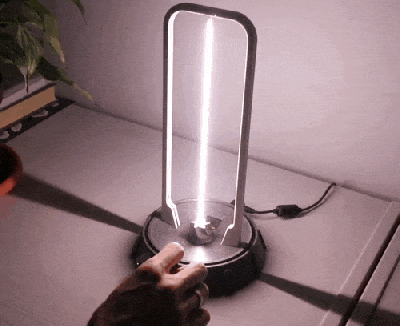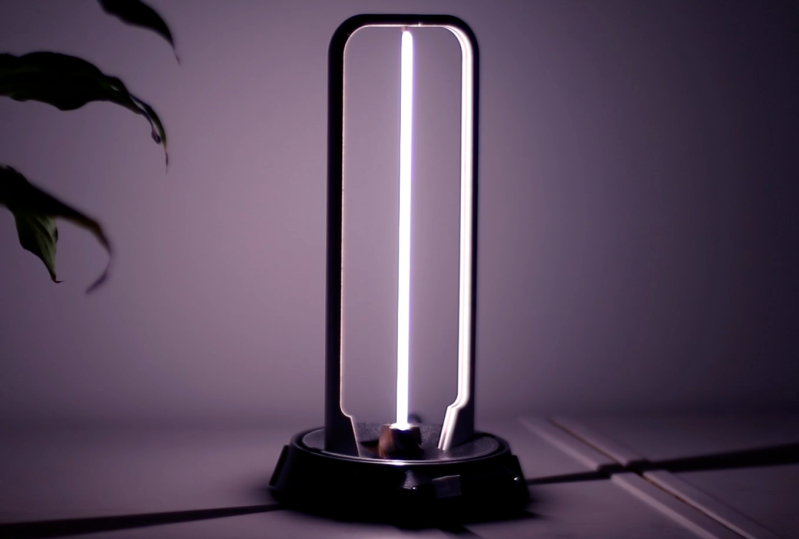The bulbs inside scanners (before transitioning to LED, anyway) were cold cathode fluorescent tubes that emit a fairly wide bandwidth of light. They were purpose-built to produce a very specific type and shape of light, but [Julius Curt] has taken this in a new, upcycled direction. Instead of just producing light, the light itself is also part of the aesthetic. A very cool 3D printed case houses the bulb and power supply and smartly hides the connecting wires to achieve a very clean look.

Part of the design involves adding a DC-DC converter before the lamp driver, allowing fading of the light. This isn’t anything new in lamps, but [Julius] noticed an interesting effect when dimming the vertically oriented lamp: as the power was reduced, the column of light would start to extinguish from one end, leading to an elongated teardrop-shaped light source.
This leads to a very interesting look, and the neat case design leads to an extremely unique lamp! The emitted light’s color temperature seems to vary a bit as the voltage drops, going from what appears to be a pretty cold white to a slightly warmer tone.
The design process is detailed on the project page, with a quick look at the CAD design process for the case. A neat touch was using a greeble (part of a coffee grinder) to add some different textures and break up the plastic-only look. That’s one we’ll have to note in our design books!
















It’s a nice project as it makes good use of the CFL tube. However, you might not want to disassemble an old but still working paper scanner with a CFL tube. These old scanners usually have a CCD sensor, which has a larger depth of field than the currently more common CIS sensors. It’s a great tool for reverse engineering circuits and getting outlines of objects for your CAD.
A decent camera on a stand and a telephoto lens will achieve the same benefit. You just have to place the camera at a distance.
For extreme closeups, I’ve also had good success placing a regular magnifying glass in front of the lens – though cheap magnifying glasses usually introduce chromatic aberration and distortion at the edges.
I wonder what happens to the mercury when the tube is half-way lit. Will it condense at the bottom and turn off the tube after a while?
I seem to remember reading that they need to be driven with AC to prevent that from happening. I’ve seen metal migration in the UV curing lamps of a giant inkjet printer but swapping the bulb end for end was one of the monthly PMs.
I had one of these after taking a laser printer/copier/scanner apart for parts (a treasure trove) and I was fully intending to do something cool with it, but unfortunately it broke. What a pity!
Please be careful with CCFL tubes harvested from scanners, some of them emit substantial UV light – not exactly optimal for things that are designed to be gazed upon. The CCFLs from old LCD monitors are much safer in this regard.
I would say please be very careful with those tubes all the time. They are really thin and made of glass so they break easely (and broken glass is nasty), they contain mercury, they may emit UV according to you (i am not familiar with this stuff), … Also remember to dispose of them properly, check local regulations.
The percentage of people who check local regulations and dispose of those bulbs properly is so close to zero you may as well discard any examples to the contrary
^ This ^
In your part of the world, that might be true, but in other parts proper recycling is basically taken for granted, especially with stuff ‘everyone knows’ are dangerous.
If they’re disposed with the scanner itself as electronic waste, they’ll most certainly get recycled properly – or shipped to Africa where people tip them into a dump and burn them for metals.
“they’ll most certainly get recycled properly”
I wouldn’t bet on that. Recycling on a large scale usually means shredding the appliances to tiny pieces followed by automated sorting. Prior removal of CCFLs and similar stuff by hand is an expensive process and you need people who know what to look for and where. There’s no environmental advantage in wasting time and money for hunting down some µg of mercury.